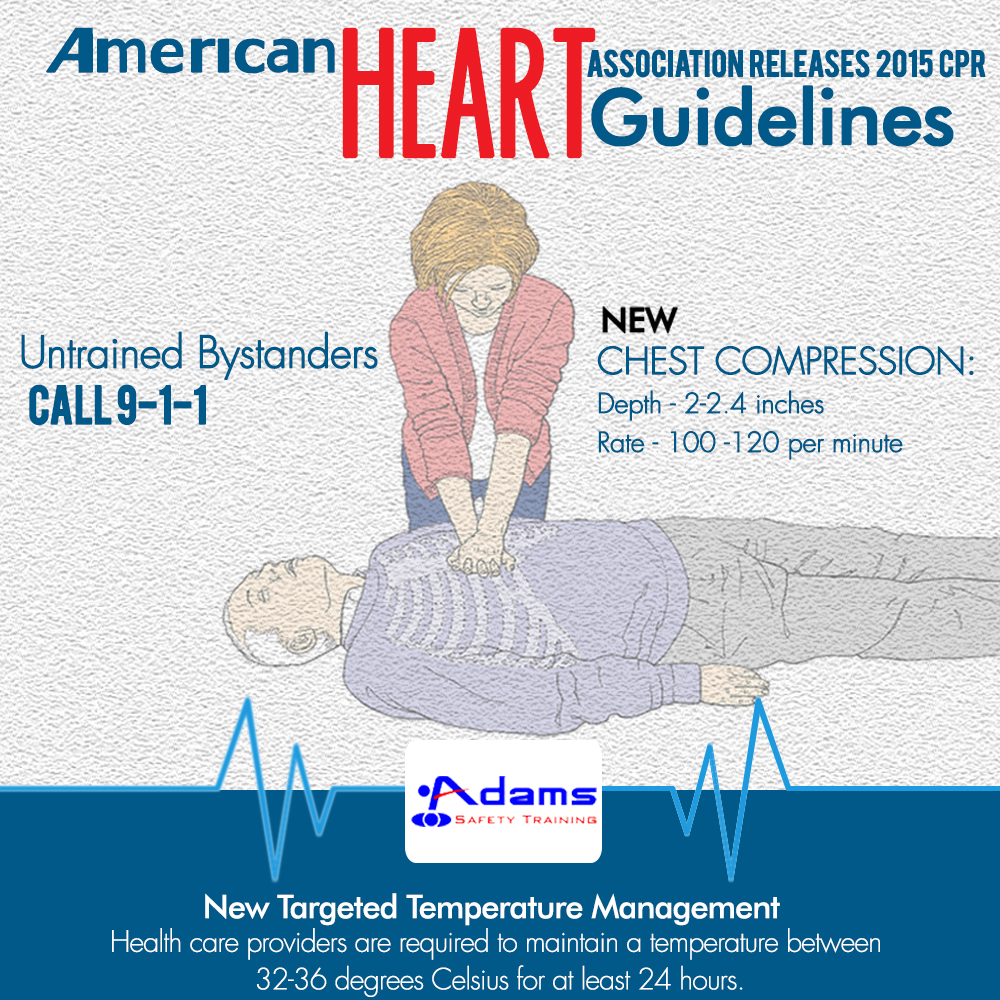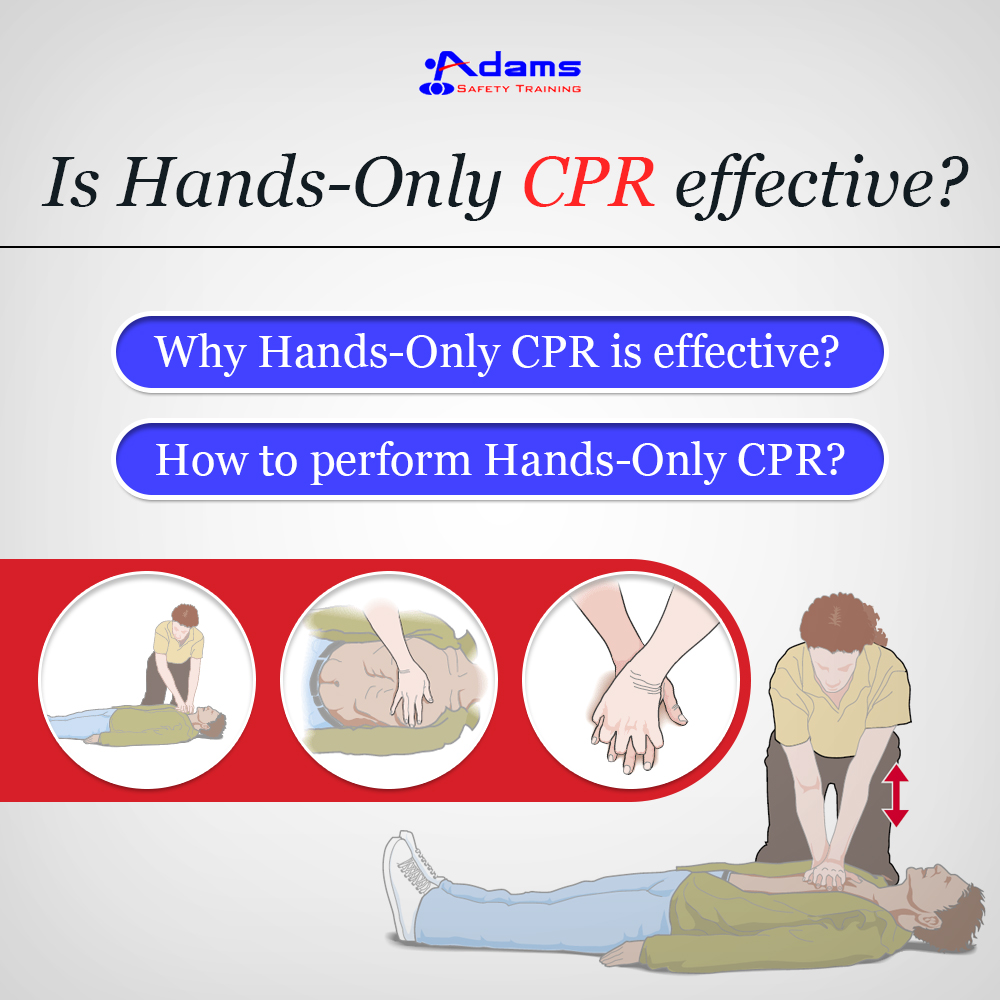October 19, 2015; San Ramon, California: Adams Safety Training, which provides First Aid, CPR, and BLS training in the San Francisco Bay Area and other surroundings since 1992, has today announced that its CPR, BLS, and first aid training programs support the newly updated 2015 American Heart Association Guidelines for Cardiopulmonary Resuscitation (CPR) and Emergency Cardiovascular Care (ECC).
The 2015 Guidelines reaffirm many of the recommendations in the 2010 Guidelines and highlight the importance of quick action, proper CPR training, and coordinated efforts of community and health-care based resuscitation systems in increasing the survival chance of victims in cardiac arrest events. The new guidelines emphasize high quality CPR in cardiac emergencies, hands-only CPR for untrained rescuers, standard CPR for trained bystanders, and successful post-cardiac arrest care.
Over 326,000 people die each year from sudden cardiac arrest (SCA) in the United States. It is believed that over 90 percent of cardiac arrest victims die because they don’t receive immediate CPR from bystanders. The 2015 guidelines say that high-quality CPR training for both bystanders and health care providers will help them feel more confident to provide better CPR to cardiac arrest victims.
All the training programs of Adams Safety Training fully support the new AHA updates for CPR so as to improve safety and overall wellness in the community. In addition to meeting the new recommendations, Adams Safety Training will provide more comprehensive instructions in CPR training for public and private employees, non-profit agencies, organizations, and general public interested in learning first aid and CPR procedures. The updated adult CPR, BLS, pediatric CPR, and first aid training courses provided by Adams Safety now include all the recommendations of the latest guidelines to help people act quickly in cardiac emergencies and save even more lives.
For more information on CPR and safety training classes and AHA 2015 CPR guidelines, visit www.adamssafety.com
About Adams Safety Training
Adams Safety Training provides First Aid, CPR, and BLS training to the entire San Francisco Bay Area and surrounding communities. With over 25 years of experience in the safety industry, Adams Safety Training can tailor a comprehensive training for any industry. The training programs of Adams Safety meet the requirements of all State and Federal regulatory agencies. It also provides on-site trainings for groups in Northern California. Adams Safety has been certified and approved by the State of California Emergency Medical Services Authority – EMSA for Licensed Childcare Training. Adams Safety Training is an authorized training site for American Heart Association, American Red Cross, and American Health and Safety Institute (AHSI).
Contact:
San Ramon Training Location
Bishop Ranch #11, Bishop Ranch Medical Center 2303
Camino Ramon Suite 145, San Ramon, CA 94583
Berkeley/Oakland Training Center
Seneca Center for Education & Training 6925
Chabot Road Oakland, CA 94618
Office Tel: 925-371-8435
E-mail: Ray@AdamsSafety.com
###




